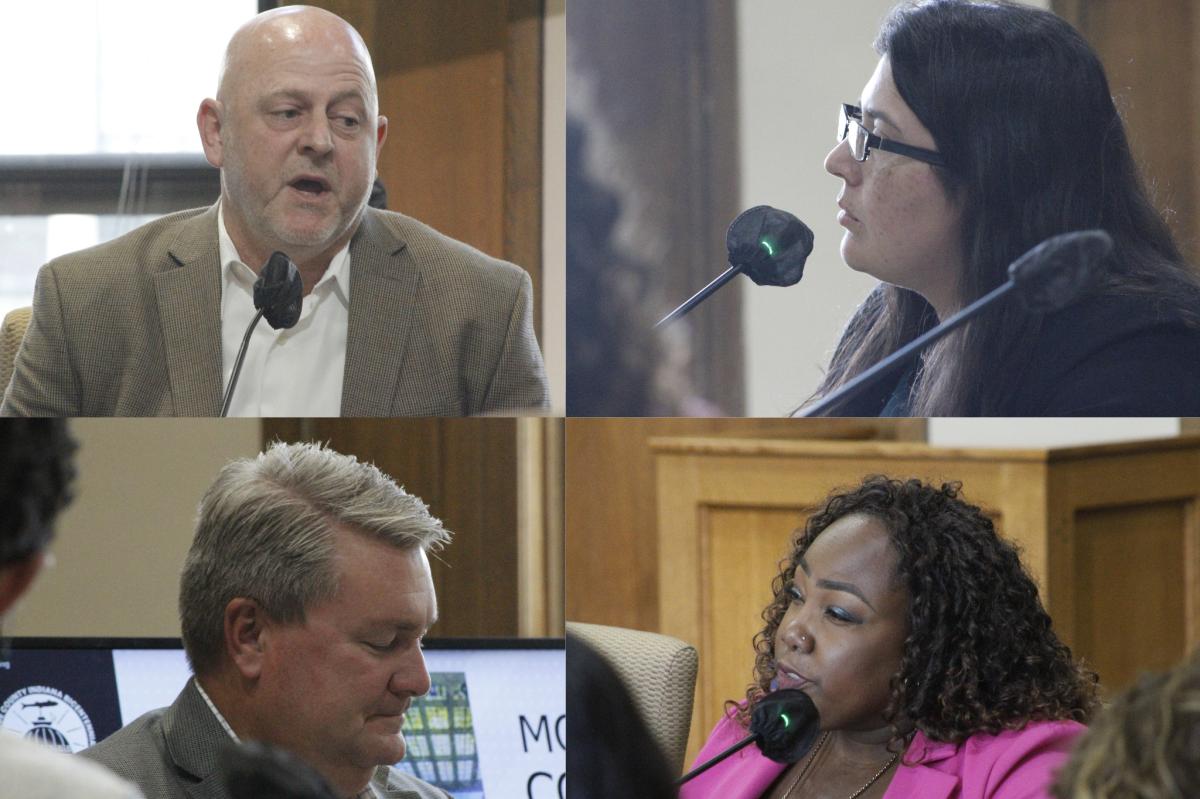
(From upper left) DLZ Project Manager Scott Carnegie, Monroe County Deputy Prosecutor April Wilson, DLZ Vice President Eric Ratts and Monroe County Council member Jennifer Crossley. (Lucas Gonzalez, WFIU/WTIU News)
Representatives with the architectural firm selected to design a new county jail made their first appearance Monday before the group of local officials discussing plans for the facility.
It was the first time each member of the Community Justice Response Committee had a chance to publicly ask questions to DLZ, which county commissioners chose last month to create a master plan for a new justice facility.
However, the two DLZ representatives present — Project Manager Scott Carnegie and Vice President Eric Ratts — were unable to answer many of the committee members’ questions, such as: Where will the jail be built? How many beds will it have? Will it be co-located with courts and the prosecutor’s office? What will the budget look like?
Many of those questions are ultimately the county commissioners’ responsibility to answer, but the lack of answers was nevertheless met by frustration and dismay by many committee members.
Monroe Circuit Court Judge Darcie Fawcett described her reaction in one word: sad.
Read more: Commissioners, Sheriff’s office continue to clash over jail firm selection
“I just feel like we’re just stuck, because we’re not getting input from the commissioners about what their vision is, or with the county council on how you could do a budget,” said Fawcett. “Somebody needs to tell us — again, I’ve said it from the get-go — what you envision this new Community Justice Center to be. We’re consistently coming back with the same questions: What’s the budget? ‘We don’t know.’ How many beds? ‘We don’t know.’ Where are we doing it? ‘We don’t know.’
Fawcett used the “chicken before the egg” analogy to describe the overall nature of recent CJRC meetings.
“We’re stuck in that debate: what comes first,” Fawcett said. “Somebody just needs to start; because again, the people sitting upstairs in jail … they’re stuck there, and we’re not doing them any good by having the same conversations time and time and time and time again.”
Deputy Prosecutor April Wilson was one of several committee members who asked questions that went unanswered. One was about budgetary constraints, a topic that was repeatedly mentioned by DLZ during the meeting.
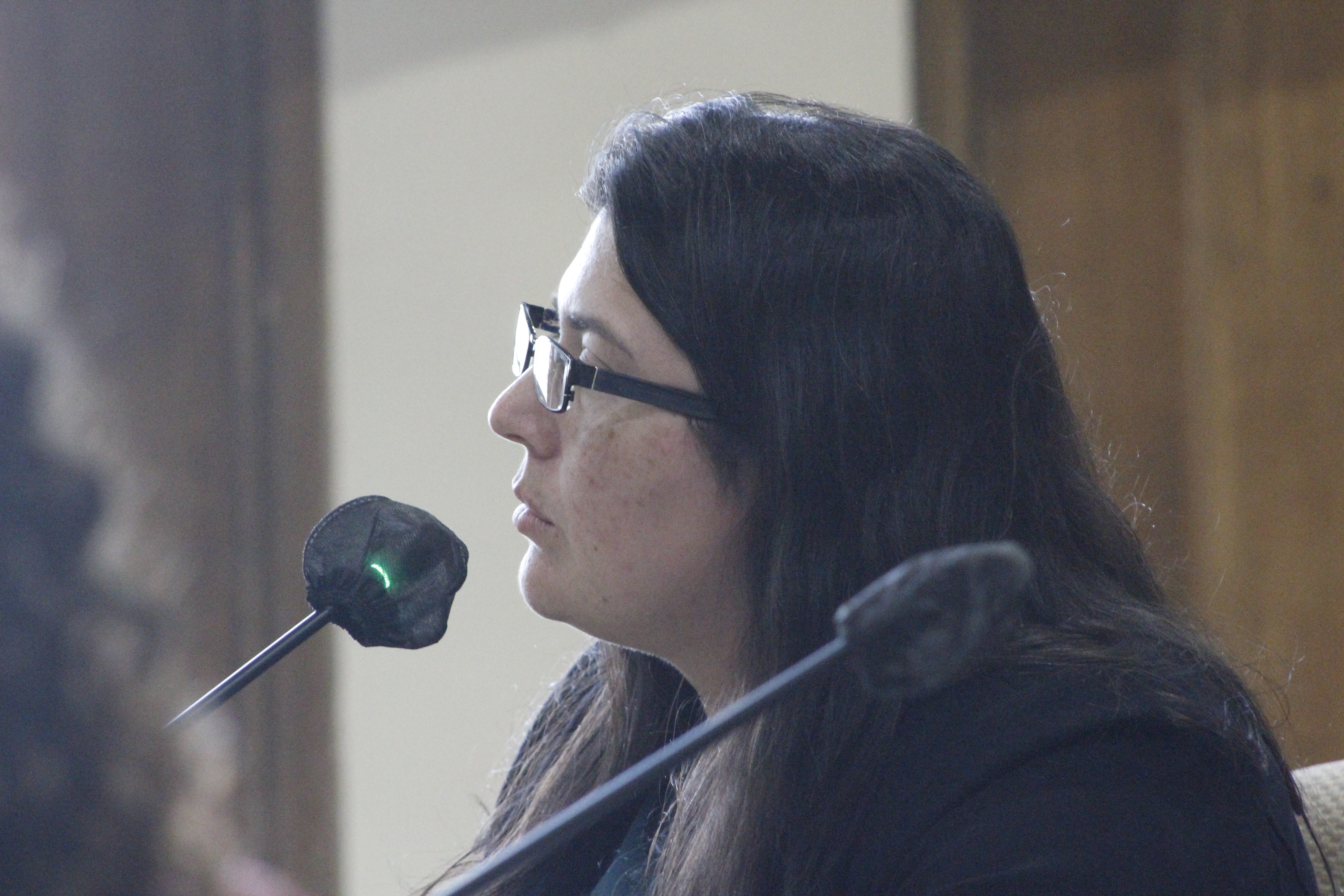
Carnegie, although unable to answer, said funds currently available may not accommodate a large-scale community justice campus, which might include co-located courts and a standalone mental health facility.
The county council will have to approve funding for a new jail.
County Council member Jennifer Crossley also received a non-answer to one of her questions. She asked DLZ to present data showing a drop in recidivism rates at facilities designed by DLZ. Recidivism reduction was a point brought up several times throughout DLZ’s presentation.
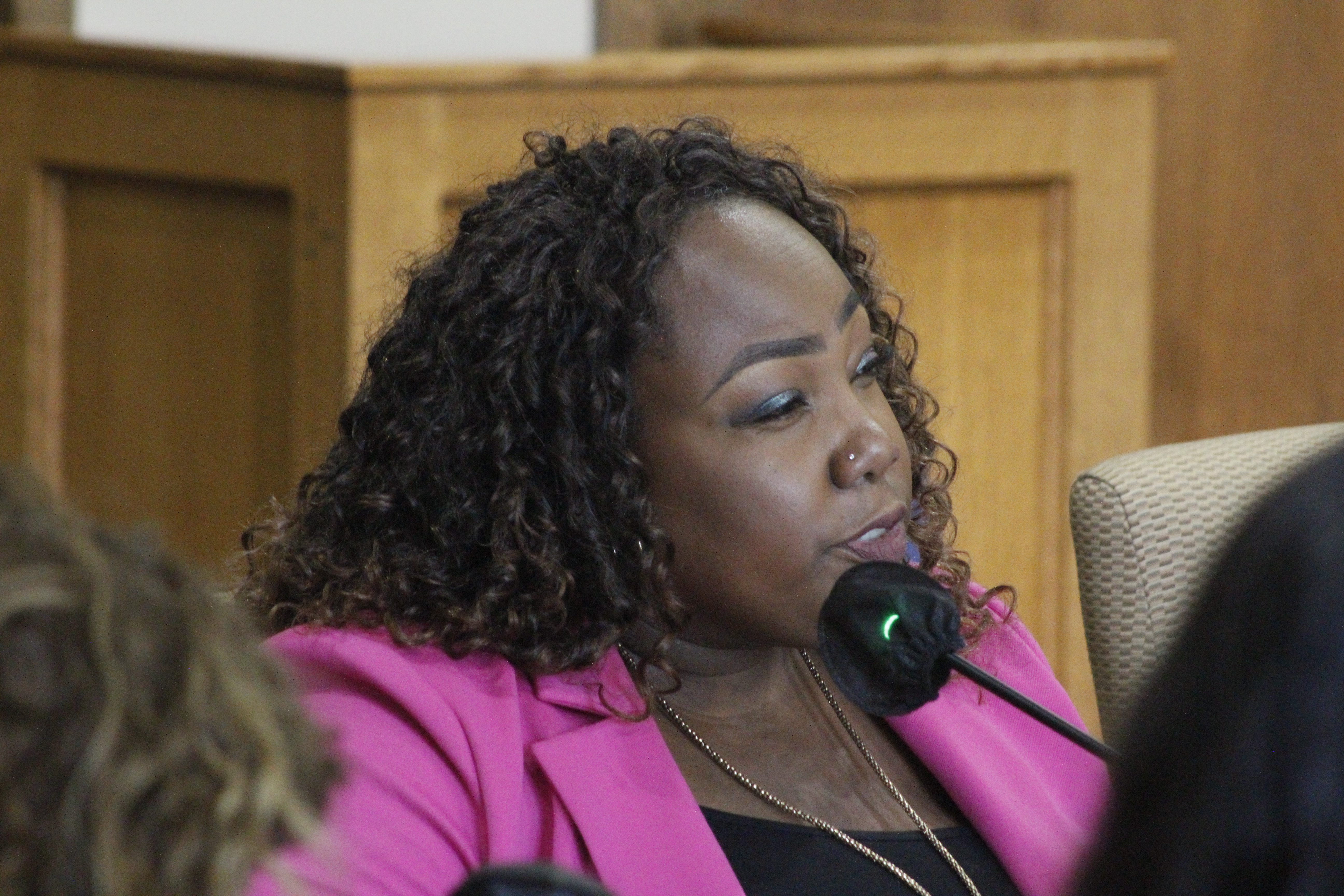
Carnegie provided anecdotal evidence, but no solid data.
“If we build six-sided concrete boxes and we treat them like animals, are we really surprised at how they may act?” he said. “I don’t have the hard facts and figures, but I’ve heard from correctional officers that are actually logging the intakes and bookings that the direct supervision style also reduces the recidivism rate because they have that hands-on relationship. There’s camaraderie between the jail staff and inmates.”
DLZ has designed many jails throughout the Midwest and across the country, including ones in Franklin County and Vigo County. Some of the shared characteristics between those facilities, according to the firm’s presentation, are the following:
- Mental health and behavioral management programs
- Program and recreation spaces
- Medical care
- Inmate services
- Staff amenities
- Natural lighting
- Brightly colored rooms
Notably absent Monday was Penny Githens, president of the board of commissioners. She asked a question remotely, however: if there’s data that supports whether a direct supervision model reduces staff turnover.
Carnegie said he could not answer Githens’ question but would look into it.
Monroe Circuit Court Judge and committee member Catherine Stafford was present Monday but sat in the audience.
Several decisions still up in the air
Another one of Wilson’s questions that received no answer had to do with where a new facility might be built.
That’s a question officials have been asking for months, but commissioners haven't provided an answer.
Commissioner Julie Thomas said there are more than a dozen sites being considered for preliminary review but declined to share more information.
Read more: Sheriff: Vote on jail firm was not unanimous, state code violation may have occurred
Wilson asked when the rest of the committee could expect more information, and Thomas responded by saying the commissioners will rely on DLZ to help narrow the sites under consideration but again declined to elaborate, citing advise given by the commissioners’ attorney.
“You don’t engage in a discussion of potential sites to purchase vis-à-vis real estate in a public setting,” she said. “We’ve never done it before, and if you think about it, there’s a good reason to not do that; but at every juncture possible, we intend to be very public and transparent about where things are at in the process.”
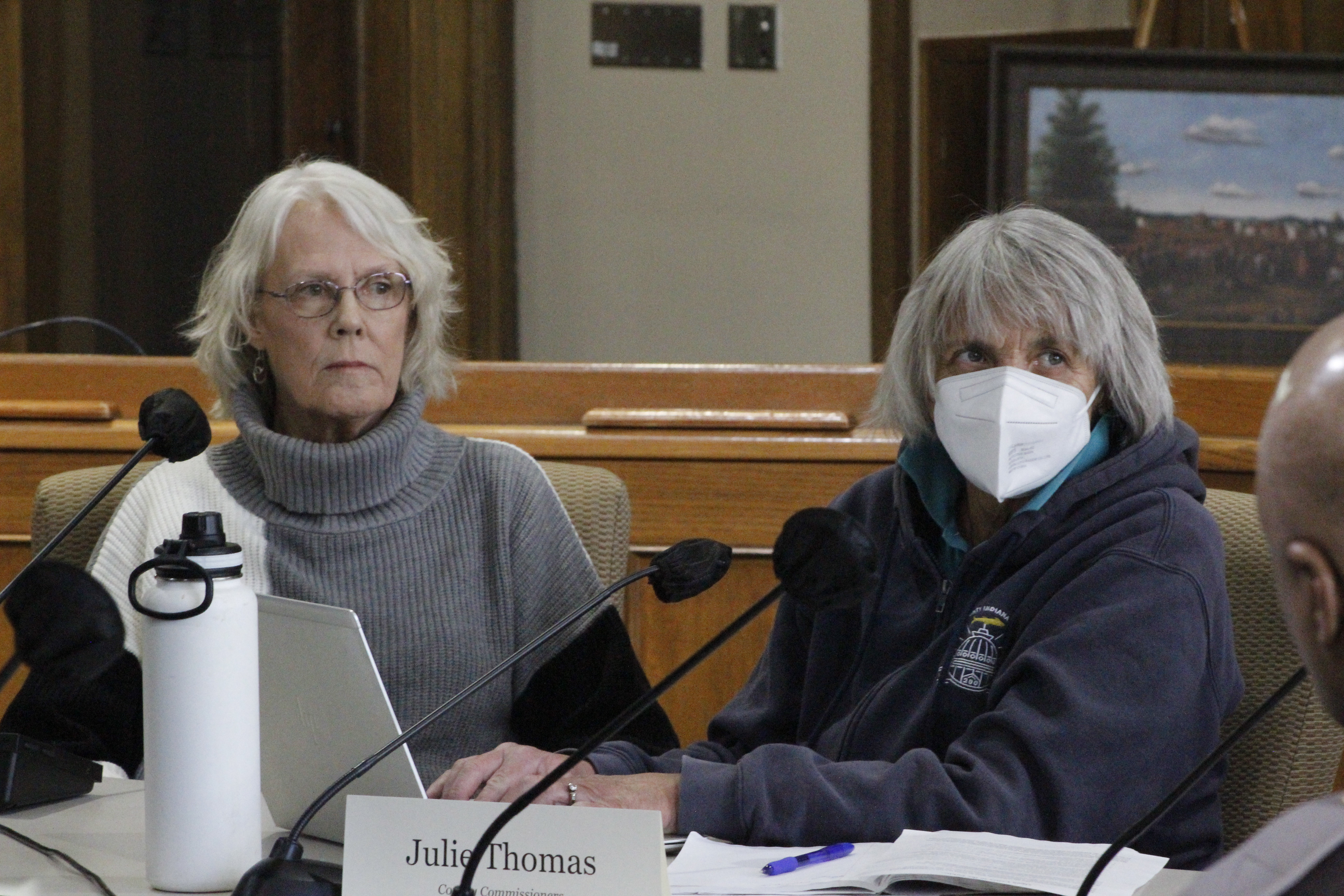
Shortly after Thomas' comments, Commissioner Lee Jones abruptly left the meeting, which went over the regularly-alloted time of an hour and a half. She said she had a prior commitment she had to attend.
Kaisa Goodman, the city's public engagement director, said a tour of land south of Catalent is scheduled for later this week. Goodman, other city representatives, county employees and members of the sheriff's office will attend, she said.
Like committee members, Goodman expressed frustration about the lack of progress made by the committee.
"As an observer of the CJRC, it feels like a majority of each meeting is spent discussing the structure and operations of the committee itself rather than the issue at hand — justice reform — and how to help people," she said. "It shouldn't take weeks or months to schedule a meeting — any meeting — but particularly one associated with such a critical and time-sensitive issue."

Goodman reiterated a stance long-held by the mayor's administration and city council: that city representatives should have a seat on the CJRC.
Wilson also asked DLZ about its understanding of exactly what it’s designing — specifically, whether it will create a plan for a detached jail or a full-scale justice campus with co-located services.
“Those decisions will come later,” Carnegie said. “Whatever that decision is, we need to master plan for it now.”
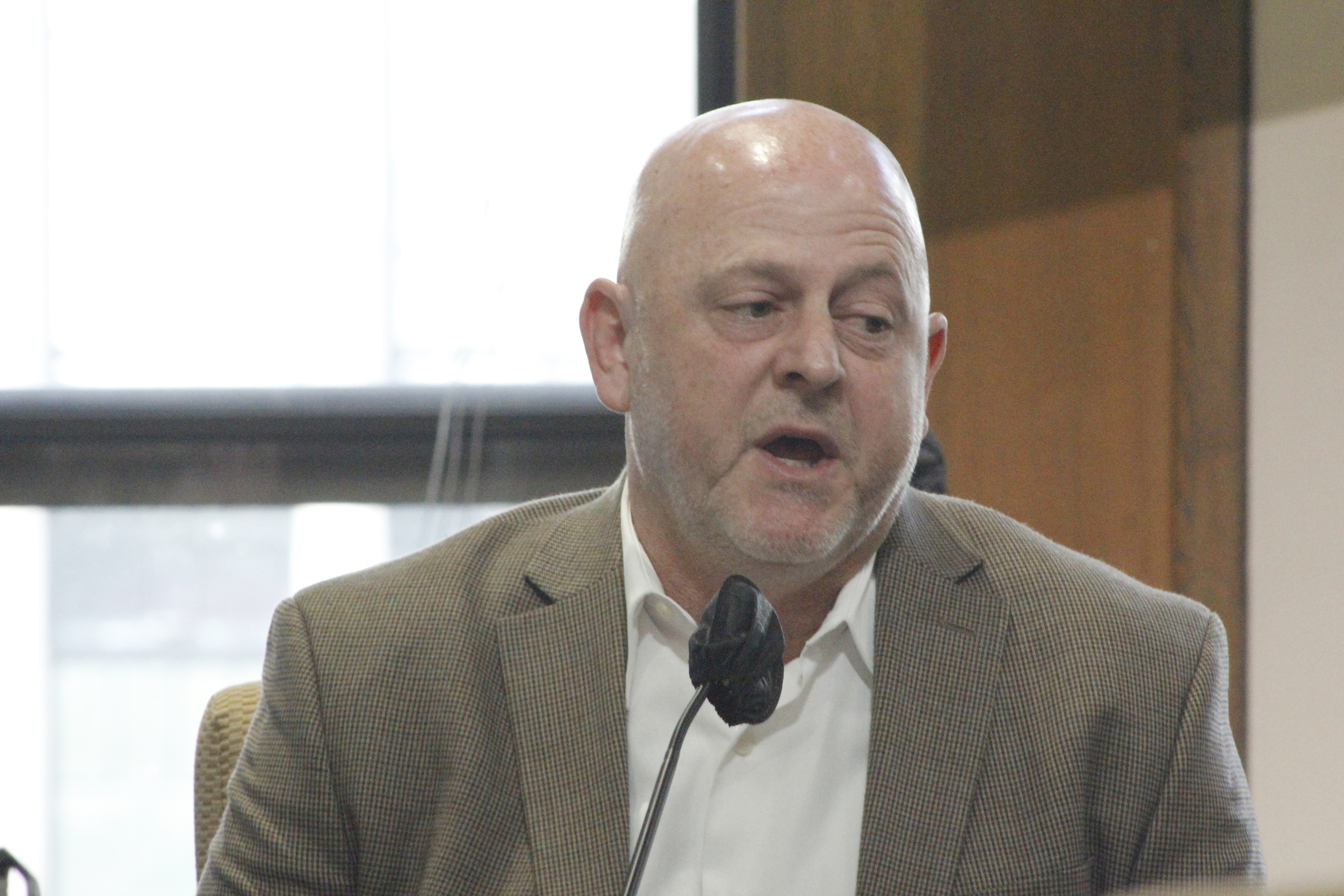
Carnegie said it might be possible to add more components to the facility five to 10 years after the initial design and construction is complete.
There’s also the question of how many beds would be needed in a new jail, something committee members have disagreed on.
Carnegie said DLZ will have to know that before it can design a plan.
Conflict between sheriff, commissioners continues
Monday also marked the continuation of discussions from earlier this month, when the sheriff’s office and county commissioners publicly squared off over the process by which DLZ was selected to create a master plan for the facility.
Marté wrote in a lengthy email to other CJRC members that a recommendation by county staff members to select DLZ was not unanimous, as stated at previous meetings. He said two representatives from his office did not formally vote for DLZ.
That topic was not at the forefront of the meeting, but Care Not Cages — a local advocacy group opposed to the construction of a new jail — announced it had submitted a formal complaint with the Indiana Public Access Counselor about the firm selection process.
The group has criticized the commissioners and on March 20 called on them to delay selecting a firm until members of the public could share their input.
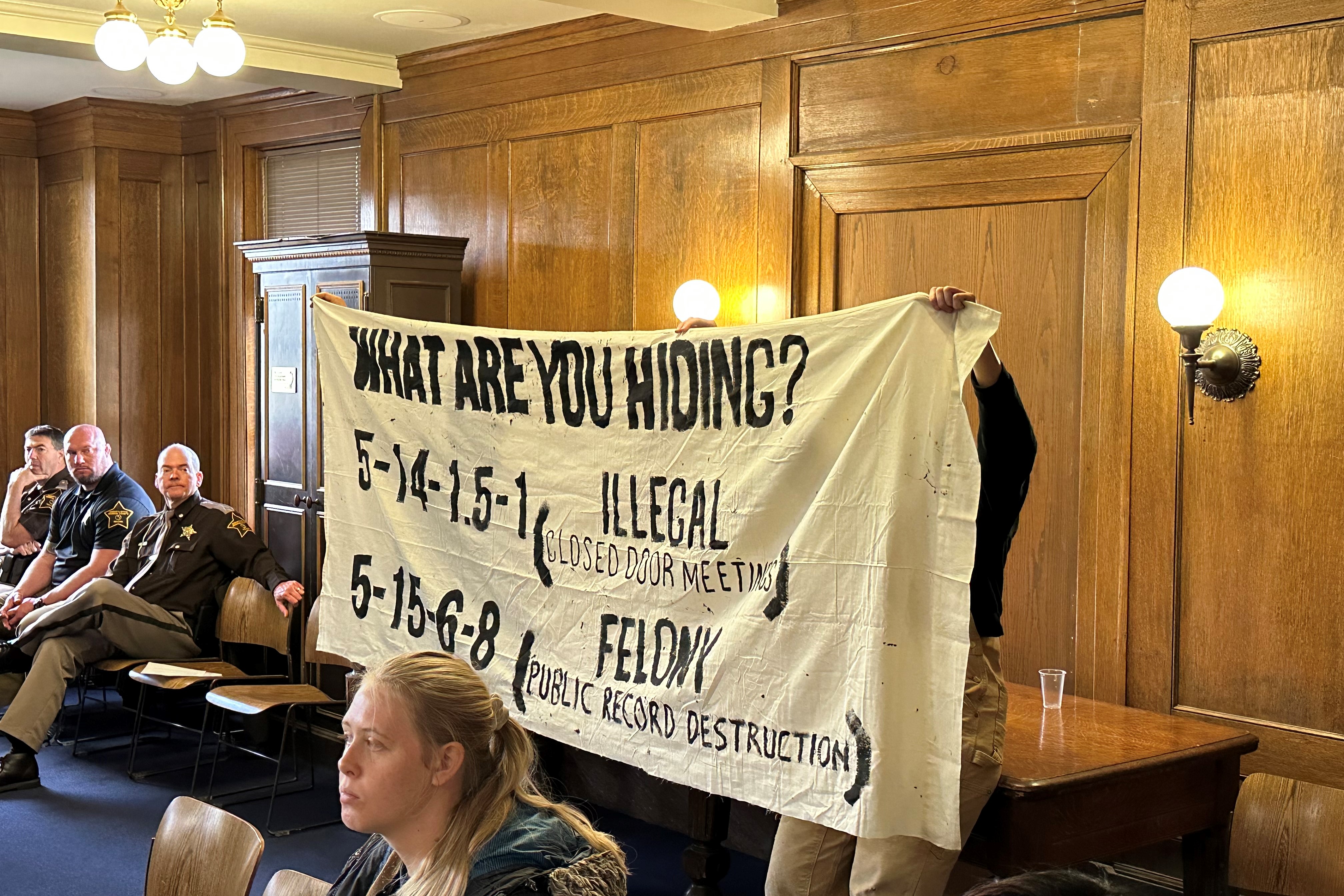
In a letter, the group said the community should have been included in those discussions.
“The County Commissioners’ office has consistently taken an illegal and anti-transparent approach to their jail proposal,” the letter reads. “We believe that citizens deserve leadership that takes their voices into account. We will not let Monroe County ignore underrepresented voices and tie up hundreds of millions of taxpayer money in a rushed project, before even considering repairing the existing facility (…)”
Also included in the letter was a request that the commissioners answer several questions regarding the firm selection process — the same questions Marté posed in his email.
Read more: County council approves list of recommendations for new jail
Marté told WFIU/WTIU on Monday his office still hadn’t received answers from the commissioners. He also said the issue was no closer to being resolved than on April 5, when Chief Deputy Phil Parker sparred with the commissioners at a public work session.
At the end of Monday’s meeting, Thomas and Githens agreed to discuss during their Wednesday work session the details of the next CJRC meeting, which is scheduled for May 1.











